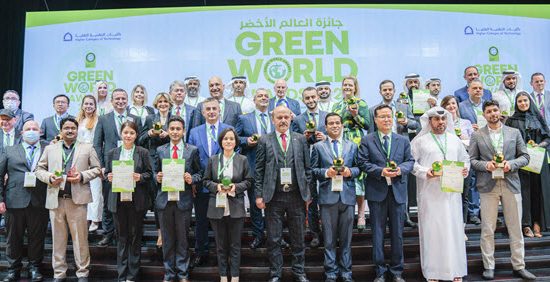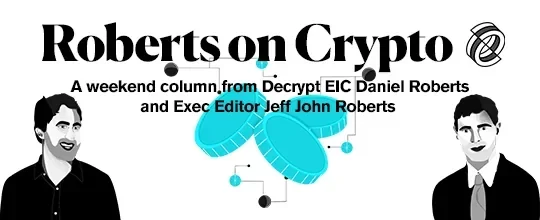UAE. Invesco today released its third annual Invesco Global Sovereign Asset Management Study[1], an in-depth report on the complex investment behaviour of sovereign wealth funds, conducted amongst more than 50 individual sovereign investors across the globe representing $7.09 trillion2 of assets, including Middle East based sovereign wealth funds.
This year’s study took place against a backdrop of an extreme fall in the price of oil and provides first-hand insight into the impact this is having on sovereign investors. It also examines how investment strategies are evolving – both in terms of preferred asset class, notably for emerging market infrastructure, and execution strategy – as collaboration becomes increasingly frequent to access investment opportunities.
Nick Tolchard, Chair of Invesco’s Global Sovereign Group & Head of Invesco Middle East, commented: “In this background, it was interesting to note that the Middle East region placed the highest importance on investment objectives, overtaking the Western sovereigns. Similarly, the Middle East sovereigns had the highest average target returns and the longest time horizons at an average of 7.8 years. Such findings place the Middle East funds in a unique place amongst sovereign investors.”
Low oil price creates expected funding challenges for some sovereign investors – notably North America expects to be more affected than the Middle East
The steep fall in oil price has major implications for economies, stock markets and current account surpluses across the globe, all of which can drive funding for sovereign investors in the short term. However, this year’s study highlights that not all sovereign investors feel equally exposed to the effects of the falling oil price, revealing regional differences depending on the level of oil exposure (defined as oil rents as a percentage of GDP) as well as governance, risk and liquidity management factors.
Perhaps counter-intuitively, the oil-funded emerging market sovereigns in the Middle East view themselves as being the least affected from a funding perspective. Rather, North American sovereign investors, who have emerged from state surpluses driven by high commodity prices, were the most frequent to say that they expected new funding to be negatively affected in the short term. The vast majority (80%) of North American sovereigns are forecasting a decline in funding this year, with the remaining 20% expecting it to remain the same [figure 1].

Nick Tolchard said: “The timing of the fall in oil prices has been particularly challenging for state governments in North America and Canada; with reduced revenues from oil producers having driven down state taxation income at the same time as state expenses are rising sharply as a result of the baby boom generation retiring.
For the rest for the world[3], a much lower but still significant 42% of those sovereigns with high oil exposure expect a decrease in funding relative to last year, which shows that the link between sovereign funding and oil is global and not just an issue for oil-driven sovereign investors in emerging markets[3].
Yet sovereign investors feel they are better placed today than pre-2008 to manage funding concerns
The falling oil price has also highlighted the importance of governance and legal structures surrounding sovereign investors [figure 2].

Despite their concerns about new funding, the majority (80%) of North American sovereigns are confident their assets are protected from being drawn on to fund potential government shortfalls. Conversely, in other parts of the world a significant number of oil-funded sovereigns expect withdrawals (67%) if the oil price remains below US$40 per barrel for two years.
This has had a polarising effect on sovereign investors’ objectives and strategy. While some have extremely conservative objectives and portfolios and therefore cite no change, others have made adjustments and felt the need to step back from more progressive investment strategies to cope with potential liquidity issues.
On average, the liquidity objectives of sovereigns (excluding Central Banks) have increased since our last survey from 6.7 to 7.3 on a scale to 10 where 10 is the most important.
Some respondents expressed concern that the fall in oil price may result in a short-term reversal to more conservative investment strategies and defer the implementation of more progressive long-term allocation trends towards alternatives. Despite this, it remains clear that sovereign investors feel they are in a much stronger position to deal with the impact of falling oil prices this year than they would have been in 2008.
Nick Tolchard commented: “Sovereign investors are certainly better placed now than they were pre the 2008 global financial crisis, with various improvements including greater recognition of liquidity objectives across the board, a better risk management and governance framework to cope with these scenarios, and improved management information on liquidity and an understanding of how best to liquidate assets. Should the oil price continue to remain low, we expect many sovereigns to focus their efforts on ensuring that progress around the implementation of more progressive investments strategies towards alternative investments isn’t deferred.”
Increasing demand for emerging market infrastructure
In the current environment, sovereign investors remain hungry for returns and are developing their long-term investment strategies accordingly – including looking increasingly at alternatives.
Previous Invesco studies have reported strong sovereign investor asset allocation preferences towards alternatives [figure 3]; a trend that is expected to continue in 2015.

However, 2015 findings highlight a significant link between asset classes and region – and specifically the affinity of emerging markets to infrastructure investment, and developed markets to real estate.
Figure 4 shows that total sovereign portfolios are overweight to emerging market infrastructure (17%), relative to emerging markets generally (9%), while total sovereign portfolios are overweight to developed market real estate (73%) compared to developed markets generally (56%). The general attraction of sovereigns to infrastructure investing is well-documented; however in emerging market infrastructure, this has been driven by two specific drivers.

Firstly, emerging market infrastructure is perceived as a low risk entry into emerging markets: sovereigns have struggled to deploy target risk asset allocations and realise the returns in emerging markets. However, concern around the risks associated with investing in emerging markets – namely political instability, corruption, regulation and a lack of legal protection – explain why the attractiveness of emerging markets drops when judged by investment factors compared to economic factors.
Infrastructure is perceived as reducing all of these risks to some extent, because in general they are mitigated by government support.
Secondly, the supply and demand dynamics in emerging markets are more attractive to sovereigns than both developed market infrastructure and different classes of emerging market alternative investments. The competition to access investments is far greater in developed market infrastructure, and in some cases (most notably in the US) the tax regime was far less attractive to international investors.
A catalyst for increased sovereign collaboration
Sovereign investors are united in collective challenges for both infrastructure and real estate investments – namely cost (particularly when paying an external party to source a deal) and competition (especially for smaller sovereigns who are often only able to compete in their home market). Deal size and frequency is a challenge for larger sovereigns who need to deploy significant assets [figure 6].

However, for both infrastructure and real estate investments, the biggest challenge for sovereign investors is sourcing deals (cited by 53% of sovereigns as the number one factor). This is hardest in infrastructure, and as a result, this year’s study highlights accelerated growth in collaboration between sovereign investors to source these deals [figure 7].

Each sovereign in the study with an allocation of greater than 5% to alternatives already had on average 2.7 active sovereign collaborations, and all expected to increase these over time.
Sovereign investors cited the following benefits of collaboration:
• The presence of certain peers within an infrastructure deal was found to effectively guarantee Board approval for some sovereign investors.
• Commercial benefits associated with a syndicate of sovereigns improving pricing based on the scale of the investment and the credibility of multiple investors.
• Reciprocated introductions arising as local sovereign investors are expected to have the inside track on any infrastructure projects in their home region [figure 8].

Nick Tolchard commented: “The trend in sovereign collaboration was observed in our 2014 findings; however in 2015 this collaboration appears to be taken further by certain sovereigns who are developing infrastructure propositions specifically to target other sovereigns. Many sovereigns whom we surveyed felt this to be a logical evolution, since those that are established are best placed to help emerging sovereigns enter new alternative asset classes.”
Nick Tolchard concluded: “In the wake the recent low oil price, this year’s study highlights that the investment industry is becoming more integrated and complex than ever, and alongside this, sovereign investors remain focused on sourcing infrastructure deals which is changing the traditional sovereign relationship.”
“We believe, this annual study provides invaluable insight into the evolving investment behaviour and strategic objectives of sovereign investors across the globe.”
A full copy of the 2015 Invesco Global Sovereign Asset Management Study, along with an infographic of the key findings, for Professional Clients only, can be found at www.igsams.invesco.com.
References:
[1]. This is Invesco’s third sovereign asset management study. In 2015 we conducted interviews with 59 different sovereign investors compared to 52 in 2014 with significant increases in our coverage of North American sovereigns and Central Banks, primarily in Europe. However we have also validated our findings using ‘common cohort’ analysis of the 48 interviews conducted with the same firms in the past two years. The breakdown of the 2015 interview sample split by three core segmentation parameters (sovereign investor objective, region and size of AUM) is displayed in figures 34 to 36 in the report.
In this study Invesco defines sovereign investors as state-owned investors, which includes: standalone Sovereign Wealth Funds (SWFs), state pension funds, Central Banks and government ministries.
[2]. Sourced by NMG Consulting: total assets of those sampled stands at $7.09 trillion as at 31st December 2014.
[3]. Those sovereigns that are not dependent on oil continue to be positive on new funding, which is consistent with results in previous years.
About Invesco Ltd.
Invesco Ltd. is a leading independent global investment management firm, dedicated to helping investors worldwide achieve their financial objectives. By delivering the combined power of our distinctive investment management capabilities, Invesco provides a wide range of investment strategies and vehicles to our retail, institutional and high net worth clients around the world. Operating in more than 20 countries, the firm is listed on the New York Stock Exchange under the symbol IVZ.
Additional information is available at www.invesco.com.
This entry passed through the Full-Text RSS service – if this is your content and you’re reading it on someone else’s site, please read the FAQ at fivefilters.org/content-only/faq.php#publishers.








